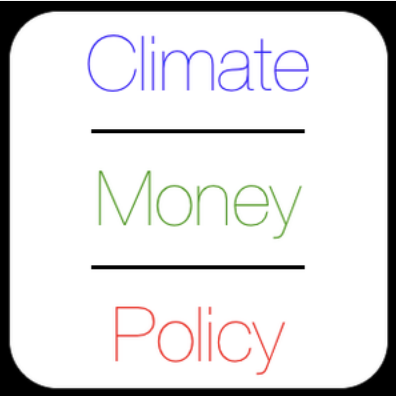6 Signs that Your Sustainability Initiative is Doomed
/Organizational change is difficult and sadly it doesn't always work out. One key to succeeding is to know what some of the warning signs are early enough to intervene. This post looks at some warning signs that tell you the sustainability initiative you care about is doomed. Any one of these gives you advanced notice to make an adjustment or abandon the project. Before we go any further let's review a couple stats from the wider market:
Fully 37% of Public Company CEOs have been unable to connect sustainability to business value. (via. TheGuardian)
Only 12% of Public Company CEOs have see investor pressure as a sustainability motivator (via. TheGuardian)
Yet 69% of Public Company CEOs see investor pressure as an increwasingly important factor in building sustainability into the core business. (via. TheGuardian)
Clearly there's a contradiction here. Sustainability can't be valueless and unconnected while also being increasingly important can it? Logic says no. Corporate sustainability and climate resilience are much more fashionable then they were a year ago (and more last year than the year before that) but this doesn't mean executives have as good handle on the discipline. Unfortunately, this can mean that some well-intended initiatives are destined to die an early death.
Sign 1 - You don't know why you're doing it
Like any new initiative, sustainability programs rely on your understanding of what the principles are that you're trying to comply with. There's no one-size-fits-all program. Yes lighting and on-site power may be common parts of a sustainability initiative but what about installing waterless urinals? If you don't have a deep clear understanding of why the company is working on its sustainability profile then chances are you won't have the kind of appetite for details that's required to uncover and incorporate the granular changes in your systems that can add up to a significant benefit.
Sign 2 - You're being advised by an energy company
The old phrase says, "If your only tool is a hammer the whole world looks like a nail." Be cautious when dealing with energy companies. Solar installers can think that they're the best and only option you need. Grid operators tend to think efficiency is the silver bullet, etc. There's a lot more to sustainability than one solution provider. For your purposes make sure that the holistic issue is driving you to the solution instead of one solution defining the issue.
Sign 3 - The kid in the mail room is coming up with all the ideas
Let's be clear. A sustainability program is not what happens when an individual contributor brings in a box to start collecting paper for recycling. It's what happens when talented managers and executive make the choice to reduce their risk profile while working on efficiency and the company's footprint for all the systems it touches. That takes organized, concerted effort by experts, buy-in from teams and a shrewd eye from the CFO or another money manger. If your program is the outgrowth of one employee's efforts that's great, but if that employee is leading an ad-hoc bunch of projects you could be in trouble, ineffective or both.
Sign 4 - No Commitment from your Partners
Your supple chain and external distribution are likely to be a major area of your own liability. Companies like Wal-Mart have already identified liabilities and are pushing responsibility upstream and down in an effort to build highly resilient, low-carbon systems. Whoever you are, dear reader, you probably don't have that kind of muscle and can't make unilateral decisions about what your suppliers' internal practices are. Instead you should get your sales hat on and be prepared to get them on board in a more collaborative fashion. Remember that until you have a program that includes your partners you don;'t have the complete picture. Not by a long shot.
Sign 5 - Most employees can't explain it, Most of the time.
ems that Forget partners, what about clarity all the way to the front line? Work on things for 90 days and then stop people in the halls. If 90% of them can't explain program goals and methods clearly enough that a stranger could understand it then you need to double down on communication. This is important for a couple reasons. First, there's the basics of wanting the message communicated for it's own sake. Second, many of the goals you'll work on rely on the team's ability to identify opportunities to become more sustainable. If they can't explain the goals back to you in their own words it's unlikely you're drilling the concepts down deep enough that individuals understand intent. On the other hand, if you get the tribe zoned in on what you're trying to do and why the world is your oyster.
Sign 6 - You don't really want to change
Face it. For all the long-term good a resilience program can do for your organization there's a lot of institutional inertial you need to overcome to make real change. Give some thought in advance to how prepared you and your team are for the change. Assess the commitment honestly. Think about the messaging, capital requirements and time commitments. Don't go in half-cocked and find yourself with a project no one really wants to commit to.
There are a lot of reasons programs die. Good programs survive and thrive when lightly-educated executives bring in expert help. Listen to the people you hire then make up your own minds and execute in unison with a high degree of communication.



